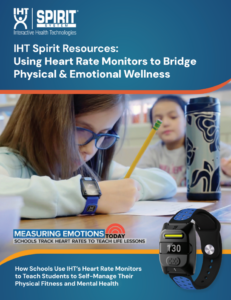When he needed to find new heart rate monitors to keep his virtual physical education students connected, Virtual Prince William (Prince William County Public Schools, Va.) Supervisor Brett Helman chose Interactive Health Technologies.
“Coming out of COVID, we were told we had to stop using the heart rate monitors we had been using due to data security issues,” Helman said. “When we went shopping for a replacement, IHT came across my desk.”
Along with alleviating the district’s data security concerns – IHT’s data is securely stored on U.S.-based servers – Helman and several teachers wore the monitors to test them out. Following the test, Helman rolled them out to a small group of students to conduct further testing.
By the end of the 2023-24 school year, Helman liked what he saw and implemented the monitors across his growing virtual PE program beginning with the 2024-25 school year. The program offers classes over the summer and then during the fall and spring semesters.
“You’re talking about, potentially, 300 kids every term that are taking (either PE1 or PE2) with us,” Helman said, “and we are using the devices with all of them.”
Creating a Program That Meets All Students’ Academic Needs
Students, all of whom are also enrolled at one of the district’s traditional campuses, use the virtual program for 1 of 2 primary reasons, Helman said.
First, they take virtual PE to fulfill the Virginia Department of Education’s high school PE requirement. Virtual PE enables them to open a spot in their daily schedule for classes that could earn them college credit.
“The majority of our students are taking PE 1 or PE 2 with us in order to open up their base school schedule for perhaps a dual-enrollment or a specialty program class,” Helman said. “Something that they want to take at their base school that they just don’t have room for because of all of the requirements.”
Second, the virtual program provides a way for students who don’t like the traditional, in-person PE class to take the class on their terms.
“There are students who don’t like that setting or who aren’t comfortable with that setting,” Helman said. “We provide that shelter for them. Maybe they have a mental health concern, high anxiety or they just don’t want to be in that setting. This provides them with the opportunity to feel a little bit more comfortable and we’ve seen growth with these students being able to take PE with us.”
The Expectations of Consistent Connectivity
The Virtual Prince William PE program has 2 requirements:
- Students must accumulate an average of 20-30 minutes of moderate to vigorous physical activity (MVPA) every day
- Students must use the IHT heart rate monitor and IHT Spirit Student App, regardless of whether they have their own fitness tracker
“We were looking for something that holds both the student and teacher accountable, and IHT gives us that aspect,” Helman said. “And what I mean by that is it has allowed us to see the progress that students are making.”
For each class, teachers create groups and activities that students can access from the IHT mobile app, which also lets students activate their heart rate monitor. This process is essential, Helman said, because it maintains the connection between students and teachers.
“We talked to some programs where they let students use whatever (device) they have,” Helman said. “But then, the teacher can’t see or have access to that (data). They’re just telling students ‘you need to do this,’ and they hope at the end of the two weeks, that’s what the student turns in.”
By using the IHT monitors and app, the data flows seamlessly into the teacher’s account. Students can choose open activities or select one that the teaching team has created.
During the activity, the student sees real-time feedback on their wrist. Immediately after the session, the student sees a summary – did they meet the goal or not? – and also receives an email with details that include a heart rate graph covering the full session and a progress report toward daily or weekly goals for MVPA.
The software breaks activity down by three colors representing heart rate zones:
- Blue indicates low intensity activity or rest. It is not considered MVPA.
- Yellow indicates exercise at a moderate intensity level.
- Red indicates exercise at a vigorous intensity level.
At the same time the student sees their summary, Helman’s team can view a student’s individual session and create a report that details progress over a time period. Either way, teachers have data to provide meaningful feedback based on the progress students are – or aren’t – making.
“We can say, ‘hey, you’re a little bit behind on your minutes,’ or ‘hey, I see your workouts and a lot of them have been in the blue range,’” Helman said. “’Here are some workouts that you can try that will elevate your heart rate into those yellow and red ranges so you can get more minutes in that range.’”
All of the data – and the ability to use it – reinforces Helman’s decision to require students to use the IHT monitors.
“Speaking as the person who hands out the monitors at the beginning of the term, would it be easier to just let them use what they have?” Helman continued. “In certain aspects, yes, but then we lose that ability, we lose that effectiveness, which I think makes our courses very efficient and more personable.”
Encouraging Students to Keep Moving
Keeping that personal connection despite the program’s virtual nature remains essential. It allows Helman and the other teachers and administrators to provide students with consistent motivation to keep working, to keep moving in a way that positively impacts their fitness and well-being.
“It’s kind of free range and what we’re trying to do with our online course is model more of what you see on a day-to-day basis,” Helman said. “What can you do in your daily life to incorporate some physical fitness in there?”
Every student’s final project focuses on creating a personal wellness plan. With a semester’s worth of data to pull from, students can create plans to follow in the future based on what’s proven to work well for them in the past. That, Helman said, will serve them down the road, even if they don’t have the IHT monitor to rely on for real-time feedback.
“When they are done with our class, hopefully they learn some things that they can do when they go back to using their personal devices,” he said. “’How can I take those lessons that I learned and incorporated them on a daily or a weekly basis?’”
Helman understands the success of his PE program isn’t only measured by whether students pass the class, and this year students are passing at a 96% rate. He wants the students to embrace physical activity and physical fitness as they graduate and become adults.
“That’s what we’re trying to do…to help them plan more effectively,” Helman said. “How can you incorporate, whether it’s 20 minutes, 30 minutes a day of walking or a yoga workout? To me, that’s what we want to do, to help them try and make healthier lifestyle choices. That models what we do as adults on a daily basis. We may not be trying to learn specific sport skills, but we are trying to figure out, ‘ok, how can I get just a little bit more fit? How can I get a little bit more in shape using the stuff around us?’”
Interested in a demo to see how the Spirit System would empower your students? Request a free demo now.


